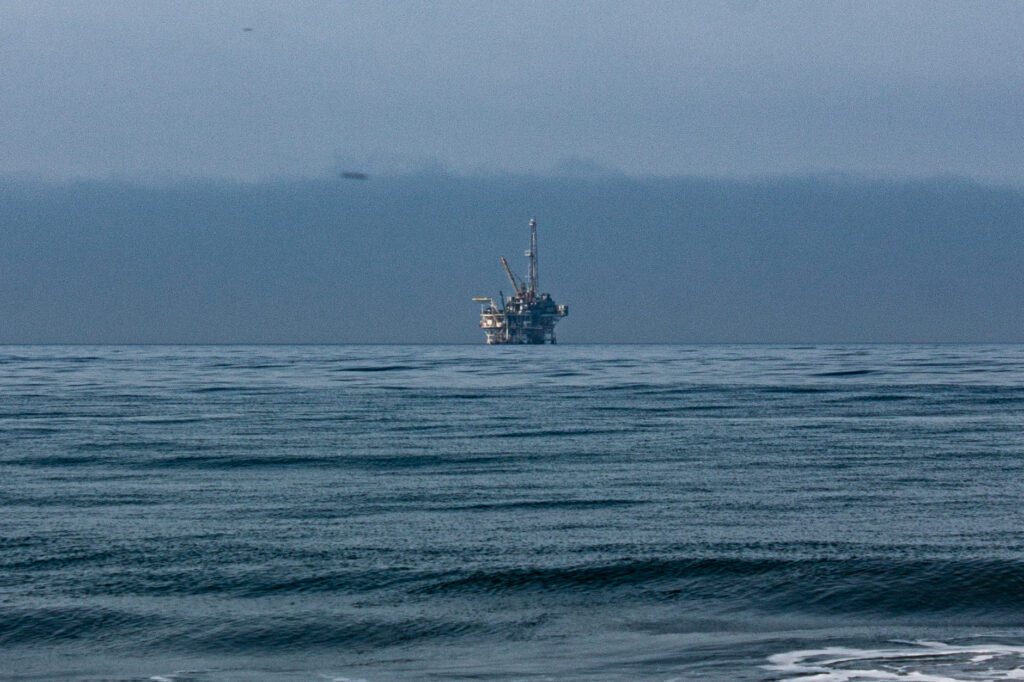Sable Offshore announced its plans to secure federal permits for an Offshore Storage and Treating Vessel facility that would allow it to resume oil production in federal waters off California’s coast. This proposed system serves as an alternative to restarting operations in the Las Flores Pipeline System, which local environmental and legal organizations have yet to respond to.

Sable’s proposed offshore storage and treating vessel facility serves as an alternative to restarting operations in the Las Flores Pipeline System. Nexus file photo
Sable’s alternative plan involves the Offshore Storage and Treating Vessel (OS&T) strategy, which would be utilized if there are “continued delays related to the [Las Flores Pipeline System]” and would allow for oil to be moved by shuttle tankers from the Santa Ynez Unit, part of the Las Flores Pipeline System, to “provide access to domestic and global markets.”
According to Alex Katz, the executive director of the Environmental Defense Center (EDC), a legal nonprofit organization, Sable’s ambitions to restart oil transportation in the Las Flores Pipeline System would be akin to “inviting another environmental disaster on our coast.”
Due to how recently Sable’s alternative plan was released, the EDC does not know much about it at present. However, Katz stated that it would involve bringing a floating processing station “about the length of three football fields” — approximately 1,080 feet long — into the Santa Barbara Channel.
This would create a significant source of air pollution that could blow ashore to Santa Barbara and other Central Coast communities, and also presents the risk of a potential oil spill.
In the same press release, Sable stated that it submitted a request to the California Office of the State Fire Marshal (OSFM) to seek formal approval to restart operations of the Las Flores Pipeline System, which has been shut down since a 2015 rupture spilled over 123,000 gallons of oil — one of the worst coastal spills in California history since the 1969 Santa Barbara oil spill.
Sable emphasized that it has fulfilled all of the operational requirements to restart oil transportation through the Las Flores Pipeline System, which includes “anomaly repairs, safety valve installations, control room enhancements, and the production of all supporting documentation and analyses.”
Despite Sable’s claim, the EDC is concerned with corrosion on the pipeline, which would make it susceptible to causing an oil spill. According to an Environmental Impact Report draft by the EDC, restarting the pipeline would likely result in a spill every two years, along with a major rupture every six years due to corrosion on the pipeline.
“According to experts who have looked at this, the pipeline is not safe. Ten years ago, it was so corroded and was described [as] being like Swiss cheese,” Katz said. “It still does not have an effective system to prevent corrosion.”
Katz also stated that the operations of the pipeline alone would become the largest source of greenhouse gas emissions and air pollution in Santa Barbara County (SBC).
“Turning it back on creates this huge new source of greenhouse gas emissions and would make it impossible for Santa Barbara County to meet its climate goals,” Katz said. “But also the oil and gas that it produces, according to Dr. Paasha Mahdavi from UC Santa Barbara, would add about two and a half million tons of CO2 to the atmosphere every year at a time when the climate crisis is escalating every day.”
Despite Sable’s ambitions to restart operations in the pipeline, they have faced various legal roadblocks that prevent them from doing so. The State of California Department of Justice filed a civil lawsuit against Sable on Oct. 3 for allegedly failing to apply for proper permits to discharge waste into waterways as it excavated pipelines for repairs.
The California Coastal Commission (CCC) and Sable are currently in litigation, after the CCC filed a cease and desist against Sable for maintaining and repairing the pipelines without proper permits in November 2024. Sable has since received permits and continued its work. They announced on Oct. 6 that it requested to amend the lawsuit and seeks damages of up to $347 million from the CCC for “unlawful delay of, and damages to, the restart of the Las Flores Pipeline System.”
In mid-September, the SBC District Attorney’s Office also charged Sable with 21 criminal charges after the corporation completed illegal repair work on the Las Flores Pipeline, violating various state codes.
Additionally, the EDC has filed a lawsuit against the OSFM to challenge waivers that the OSFM issued to Sable in December 2024.
“If you can believe it — just 10 years after one of the worst spills in our state — the waivers would allow Sable to restart without the normal safety technology in place,” Katz said.
According to Katz, even if Sable receives approval from the OSFM to start operations, the SBC Superior Court has placed a preliminary injunction that prevents Sable from restarting until they have all of the necessary approvals.
Some of these roadblocks explain the reasoning behind Sable’s decision to present an alternative OS&T strategy, which would pump oil in federal waters and put Sable’s operations out of the jurisdiction of local and state authorities.
According to Katz, UCSB students have played a significant role in presenting roadblocks in Sable’s operations by speaking out at public hearings and press conferences. Katz encouraged students to continue advocating for this issue and to attend future hearings, including one taking place on Nov. 4, which would decide whether SBC will transfer permits from Exxon to Sable to operate equipment on shore.
“Showing up to hearings, writing to the decision makers, making your voice heard and making sure people in the community know about this project and how dangerous all of that has been is really critical here,” Katz said.
A version of this article appeared on p. 3 of the Oct. 9, 2025 print edition of the Daily Nexus.




















